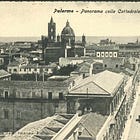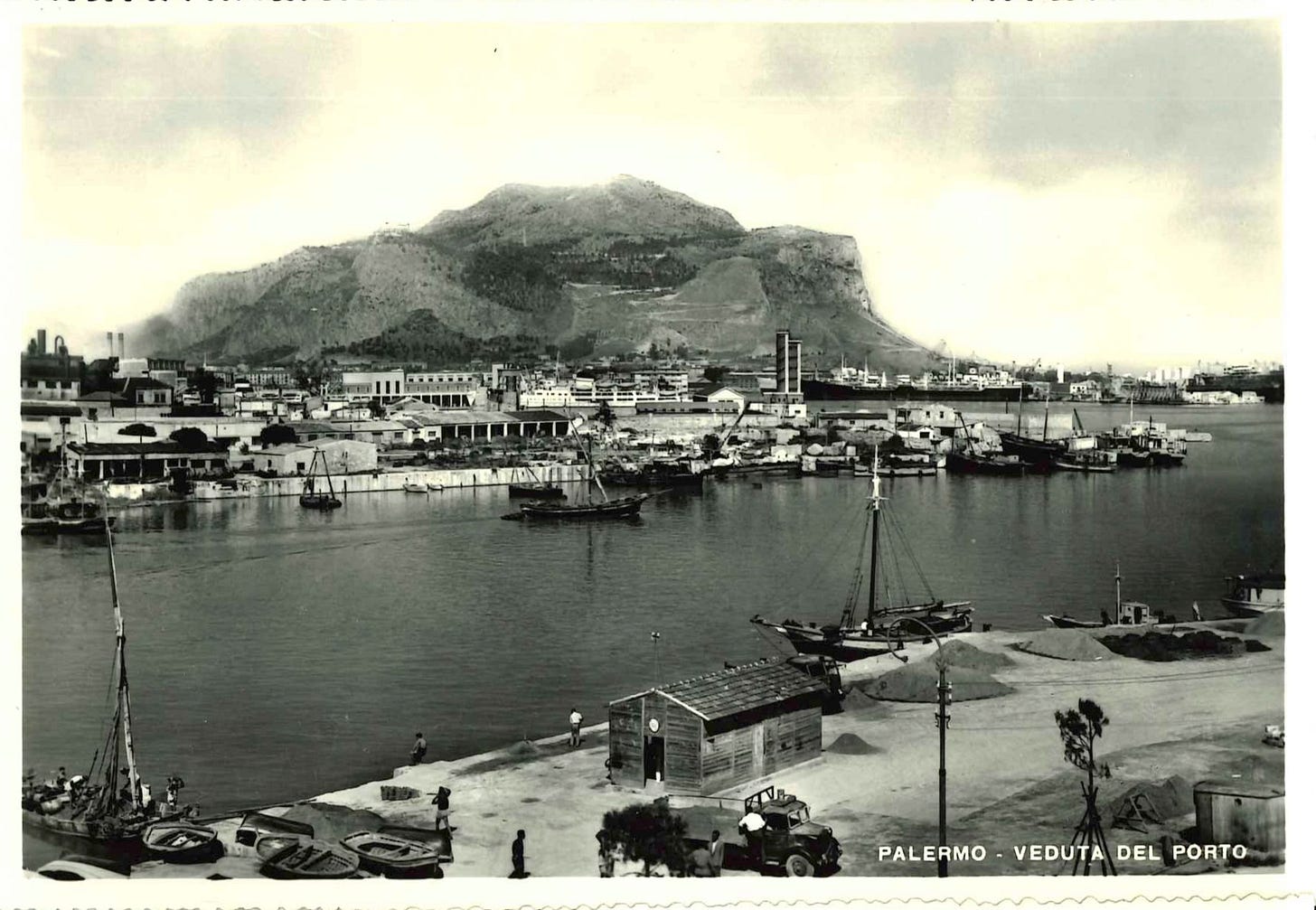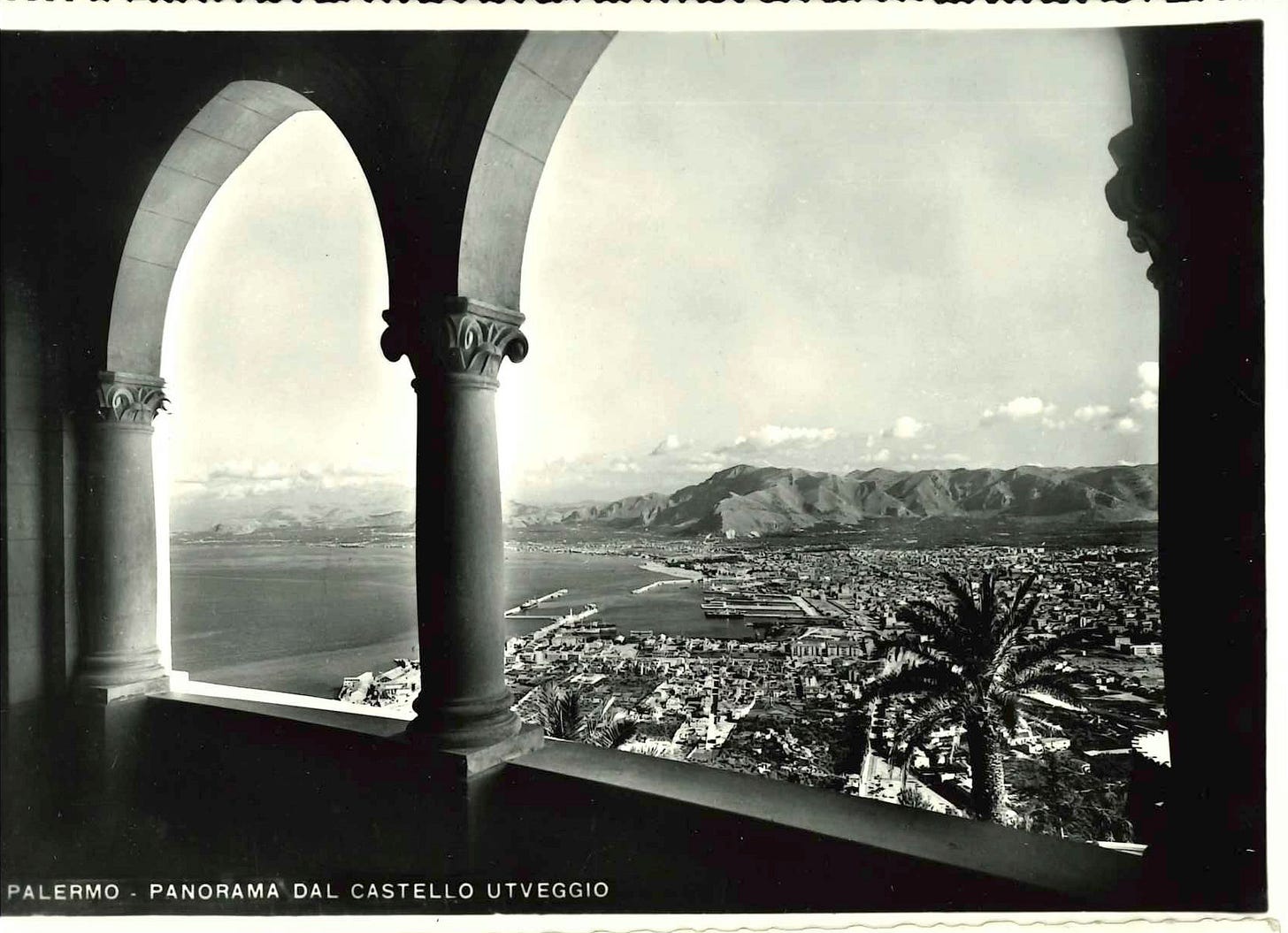Palermo in Kodachrome
(of course there's also some b/w postcards 'cause I find them aesthetically pleasing)
This is to follow-up on the last dedicated posting on Palermo, Italy, one of the known gems (and not for reasons of the Godfather movies). In case you missed part one, please click on the link below:
So, we’ll start with three black-and-white postcards from the 1950s (none were mailed, but I do like their “feeling”, if you know what I mean):
Above a “view from the port”, and do note the truck and the fishermen in the foreground. Below, although a scanning mishap apparently happened, a “panorama from the Castello Utveggio”, which is
a monumental palace built between 1928 and 1933 on a promontory of Mount Pellegrino overlooking Palermo, Sicily. It was built in a Neogothic style resembling a castle with crenellated rooflines
Of course, I can’t resist not posting a postcard showing the cathedral:
Palermo in Colourful Postcards
And here we go—St John the Hermit (note that there’s a vintage postcard by Francesco Verderosa from c. 1920 in the first posting):
Behold the Sanctuary of Saint Rosalia, which marks “the spot where her remains were found which can be reached via a scenic bus ride from the city” (source).
Saint Rosalia, by the way, is nothing less than the patron saint of Palermo:
Rosalia was born of a Norman noble family that claimed descent from Charlemagne. Devoutly religious, she retired to live as a hermit in a cave on Mount Pellegrino, where she died alone in 1166. Tradition says that she was led to the cave by two angels. On the cave wall she wrote “I, Rosalia, daughter of Sinibald, Lord of [Monte] delle Rose, and Quisquina, have taken the resolution to live in this cave for the love of my Lord, Jesus Christ.”
Once more, the cathedral in full colour:
Here’s the Garibaldi Theatre, also in colour:
And, finally, another “general view” of the city, which chimes with the black-and-white postcard showing the “panorama from the Castello Utveggio” above:
Addio, Palermo, for we must travel on.













I wonder what Quisquina thought of the whole hermit business.
It’s beautiful